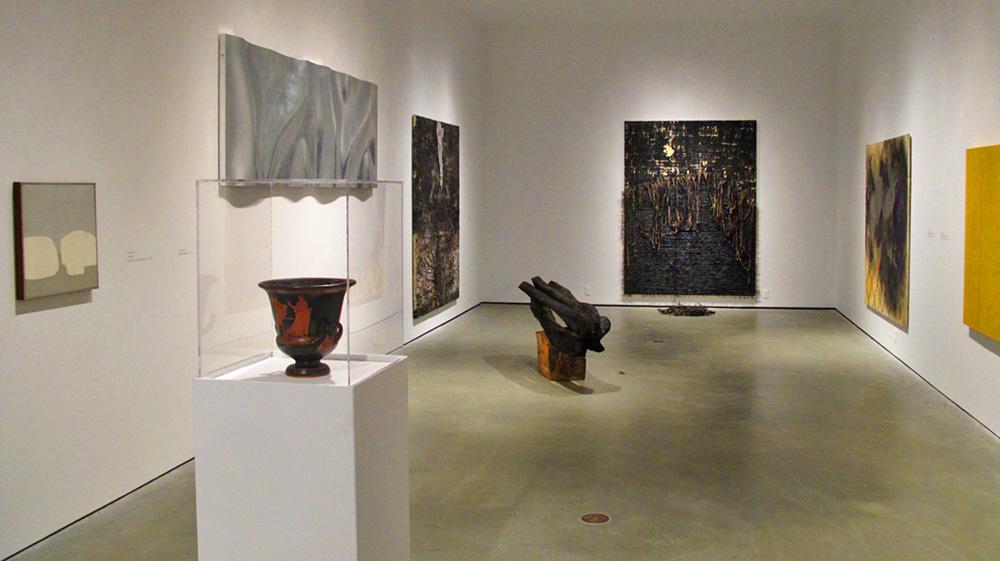The transformation is paused in mid-motion. Thick layers of carbon-black wax have been decimated, the top third of a painting striated with the flickering light of raw canvas where jute ropes—previously embedded in the wax—have been ripped out of their encaustic casing. Dangling loops of rope hang from the work, their labour halted in mid-process. This painting—Breaking Black (2011) by Nicole Collins—is vivid and raw, vulnerably honest in its process of reinvention.
When Ihor Holubizky encountered this painting, he resolved to bring it to the McMaster Museum of Art, where he is senior curator. Rather than establish a context of historical trajectory, arguments of theory or other classic curatorial themes, he invited Collins to construct a focused exhibition using her own painting as the linchpin. She sifted through the museum’s rich collection, relying on the distinct body of knowledge she has forged over years of studio experimentation. Ties of material, process and meaning became the basis for Collins’s selection of work for the exhibition “Breaking Black.”
An evocative, precise materiality is what the exhibition offers. The nine works in it are sites of change, with processes of heating, melting, burning, layering and pouring readily visible to the eye. Like Collins’s Breaking Black, Anselm Kiefer’s Yggdrasil (1985–91) expresses its own frailty. The painting is charred and punctured, like an ancient artifact. A poured pool of lead is poised like a gash in the sky. In Sigmar Polke’s Zaun (Mutlangen) (1986), deep darkness shines through a resinous amber glow. The black is not that of charcoal’s sooty oblivion; rather, it is pierced by tiny metallic particles, which shimmer like stars in the night sky. Jiri Ladocha has covered an undulating form with thin squares of silver leaf to create Silver Wave (2012). Its reflectivity is beguiling, coaxing colour from around the room. This work has a confounding nature, simultaneously as solid as metal and as elusive as light, a static object that changes before our eyes.
How is it that these basic objects, declaring their presence and their making, can touch human experience so deeply? In her catalogue essay, Collins draws from the historical practice of alchemy to describe this power. As James Elkins has noted, alchemy “is the most developed language for thinking in substances and processes. For a ‘spiritual’ alchemist, whatever happens in the furnace is an allegory of what takes place in the alchemist’s mind or soul.” The alchemist’s lab offers a model for the artist’s studio; experiments with distilling, heating and mixing putrid substances evoke aspects of the creative process. Sometimes process-based art is like going through the motions, a formalism where meaning is flattened. In this exhibition, however, Collins has enjoined a community of visual alchemists; here, a crucible of experience is acknowledged, and works enact, before our eyes, a hope of transformation.









